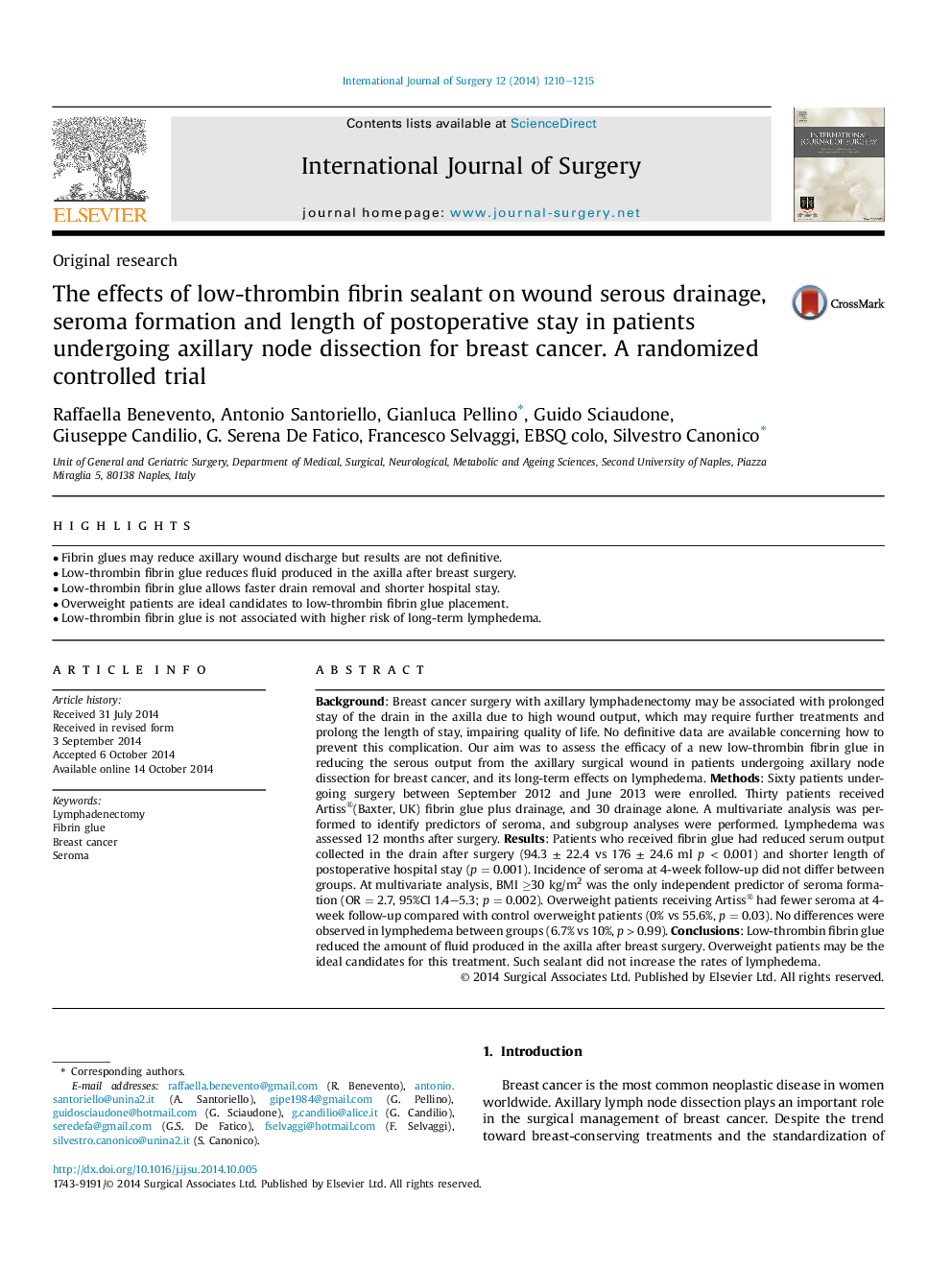| کد مقاله | کد نشریه | سال انتشار | مقاله انگلیسی | نسخه تمام متن |
|---|---|---|---|---|
| 4286367 | 1611984 | 2014 | 6 صفحه PDF | دانلود رایگان |
• Fibrin glues may reduce axillary wound discharge but results are not definitive.
• Low-thrombin fibrin glue reduces fluid produced in the axilla after breast surgery.
• Low-thrombin fibrin glue allows faster drain removal and shorter hospital stay.
• Overweight patients are ideal candidates to low-thrombin fibrin glue placement.
• Low-thrombin fibrin glue is not associated with higher risk of long-term lymphedema.
Background: Breast cancer surgery with axillary lymphadenectomy may be associated with prolonged stay of the drain in the axilla due to high wound output, which may require further treatments and prolong the length of stay, impairing quality of life. No definitive data are available concerning how to prevent this complication. Our aim was to assess the efficacy of a new low-thrombin fibrin glue in reducing the serous output from the axillary surgical wound in patients undergoing axillary node dissection for breast cancer, and its long-term effects on lymphedema. Methods: Sixty patients undergoing surgery between September 2012 and June 2013 were enrolled. Thirty patients received Artiss®(Baxter, UK) fibrin glue plus drainage, and 30 drainage alone. A multivariate analysis was performed to identify predictors of seroma, and subgroup analyses were performed. Lymphedema was assessed 12 months after surgery. Results: Patients who received fibrin glue had reduced serum output collected in the drain after surgery (94.3 ± 22.4 vs 176 ± 24.6 ml p < 0.001) and shorter length of postoperative hospital stay (p = 0.001). Incidence of seroma at 4-week follow-up did not differ between groups. At multivariate analysis, BMI ≥30 kg/m2 was the only independent predictor of seroma formation (OR = 2.7, 95%CI 1.4–5.3; p = 0.002). Overweight patients receiving Artiss® had fewer seroma at 4-week follow-up compared with control overweight patients (0% vs 55.6%, p = 0.03). No differences were observed in lymphedema between groups (6.7% vs 10%, p > 0.99). Conclusions: Low-thrombin fibrin glue reduced the amount of fluid produced in the axilla after breast surgery. Overweight patients may be the ideal candidates for this treatment. Such sealant did not increase the rates of lymphedema.
Journal: International Journal of Surgery - Volume 12, Issue 11, November 2014, Pages 1210–1215
